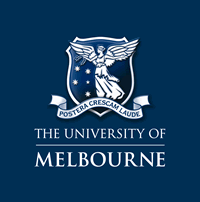Dr Simon Illingworth
Applications accepted all year round
Competition Funded PhD Project (Students Worldwide)
About the Project
A common characteristic of small aerial vehicles such as birds or UAVs (Uninhabited Air Vehicles) is that their flight dynamic time scales and aerodynamic time scales are comparable. This is in contrast to conventional aircraft, where the flight dynamic time scales are much slower than the aerodynamic time scales, meaning that body inertia terms tends to attenuate fast motions. On the one hand this is an advantage, allowing agile manoeuvres to be performed without inertia terms attenuating them; but on the other hand it raises problems, since such vehicles are highly sensitive to disturbances such as gusts.
The aim of this project is to develop control laws for small aerial vehicles with flexible wings. It will extend recent work on the modelling and control of unsteady aerodynamics for agile flight so that, as well as having pitching and plunging degrees of freedom, the wing is also able to change its shape. In particular we would like to answer the following two questions:
1. How should one actuate the surface in order to improve agility during manoeuvres?
2. How should one actuate the surface in order to minimize the effect of gust disturbances?
The motivation for the work is twofold. First, birds, bats, and insects routinely exploit flow unsteadiness and wing flexibility to improve manoeuvrability. By focussing on these two aspects, the work will provide valuable insight to such flows. Second, as UAVs become smaller and lighter, control of unsteady aerodynamics to achieve agile manoeuvres and to accommodate gust disturbances will become increasingly important.
The University of Melbourne is ranked number 1 in Australia and number 33 in the world by the Times Higher Education World University Rankings. The university is located centrally in Melbourne, which has been ranked the most liveable city in the world for four consecutive years (2011, 2012, 2013, 2014).
You should have a first-class Honours degree or international equivalent in Aeronautical Engineering, Mechanical Engineering, or a related subject. You should have an interest in learning more about fluid mechanics; computational methods; and dynamics and control, since all are required for this project.
If you are interested in the above project and meet the criteria you should send a CV (including contact details of two referees) and a cover letter to [Email Address Removed].
If you wish to discuss any details of the project informally, please contact:
Dr Simon Illingworth
Department of Mechanical Engineering
email: [Email Address Removed]
website: http://people.eng.unimelb.edu.au/sillingworth
Deadline: Applications will be accepted at any time until the position is filled.

 Continue with Facebook
Continue with Facebook

